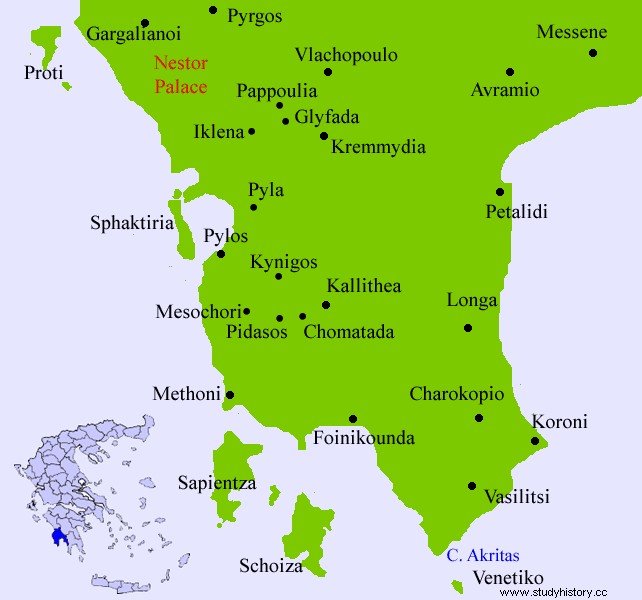Previously we have given an account here of the excavations in the area of the Palace of Nestor in Pylos, and some of the spectacular discoveries that it is bringing. The director of the project himself, archaeologist Michael Cosmopoulos, from the University of Missouri-San Luis, has recently affirmed that the results of the excavations in Iklaina have led us to review our knowledge about the Mycenaean states, with truly unexpected findings .

Iklaina is located about 10 kilometers northeast of the town of Pylos, and since systematic excavations began in 2006, the remains of an early Mycenaean palace, large Cyclopean walls, terraces, and Linear B inscriptions have been found.
The importance of these findings is that they reveal Iklaina as one of the capitals of the Mycenaean kingdom of Pylos, but they have also forced archaeologists to radically change their conception of the Mycenaean era.
The cyclopean architecture, the development of urban structures such as roads and paved squares, the water supply systems and even the presence of a central sewage network, which until now were only limited to the great palaces of Mycenae, Tiryns, Thebes or Pylos , force to rethink the evidence from a new angle , according to Professor Cosmopoulos.

The findings also show that Iklaina suffered, at some point, a violent invasion from Pylos, and that it would have been part of a kind of early federation of states. The Linear B inscriptions reveal that, although Iklaina was subject to the Palace of Nestor, the main capital located on the hill of Epano Englianos (14 kilometers from Pylos), it enjoyed a certain autonomy. It had its own governor and managed its economic production.
This leads one to think that the political system is the oldest known version of a two-tier government:a central authority and semi-independent regions.

The Palace of Néstor, named after the Homeric hero who appears as King of Pylos in the Iliad, designates the main archaeological site in the area. A place whose original name is unknown, and which the Italians would later call Navarino in the Middle Ages. The evidence of human presence dates back to the Neolithic, and from the excavations carried out between 1939 and 1952 by Carl Blegen, it is deduced that it was the center of a Mycenaean state of around 2,000 square kilometers.

The information provided by the tablets written in Linear B found by Blegen indicate that the place was called Pilos by its own inhabitants, who numbered between 50,000 and 120,000 between 1600 and 1100 B.C. Sometime in the 8th century B.C. the place was razed and burned to the ground, and abandoned. The historian Thucydides states in his History of the Peloponnesian War in the 5th century BC. that the area was practically uninhabited.
The present modern city of Pylos is located about 14 kilometers south of the ancient settlement.
